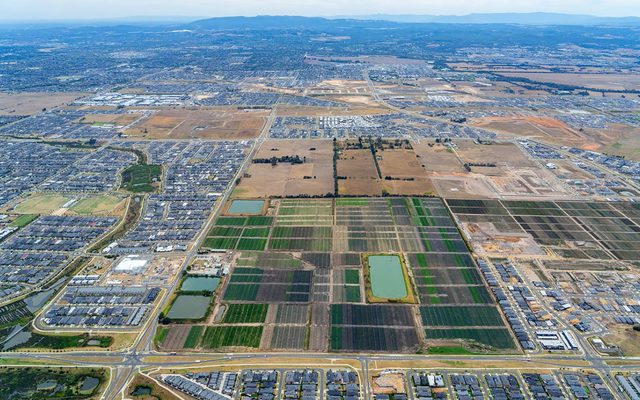This article is from the Australian Property Journal archive
2023 saw Australian home values soar by 8.1%, in a year of diverse conditions that broadly stabilised over its final months.
CoreLogic’s s national Home Value Index (HVI) was up 8.1% over the year, up from 2022’s downturn with a 4.9% decline, while not living up to the pent-up results of 2021’s 24.5% surge.
In December of 2023, the HVI saw a soft 0.4% increase, reflecting the slightest gain in CoreLogic’s national monthly index since February.
“After monthly growth in home values peaked in May at 1.3%, a rate hike in June and another in November,” said Tim Lawless, research director at CoreLogic.
“Along with persistent cost of living pressures, worsening affordability challenges, rising advertised stock levels and low consumer sentiment, have progressively taken some heat out of the market through the second half of the year.”
Over the year, annual change in housing values was mixed, with Perth seeing the greatest boost at 15.2%, while regional Victoria reported a fall of 1.6%.
Across Perth, Adelaide and Brisbane dwelling values have been rising by over 1% each month on average since May.
While Melbourne and Sydney’s pace of growth has seen a sharp decline since the RBA rate hike in June.

“Such diversity across the capital cities can be broadly attributed to factors relating to demand and supply,” added Lawless.
“In Perth, Adelaide and Brisbane, housing affordability challenges haven’t been as pressing relative to the larger cities, and advertised supply levels have remained persistently and substantially below average. The cities where home value growth has been lower or negative through the year are showing higher than average levels of advertised supply alongside annual home sales which ended the year below the five year average.”
2023 saw capital cities recording stronger growth than regional areas, with the combined capital cities index up 9.3% and the combined regional index up 4.4%.
“Stronger conditions across capital city markets is a reversal of the early COVID trend which saw regional markets experience higher demand amid strong internal migration,” said Lawless.
“Regional migration trends have mostly normalised through 2023, and the significant capital gains recorded through 2020 to 2022 has meant many regional markets have become less affordable.”
Five of the eight capital cities are recording home values below their record highs, with Sydney down 2.1% from its peak, Melbourne down 4.1%, ACT down 6.3%, Hobart down 11.2% and Darwin down 2.8% from its cyclical high in August last year.
In the rental market, there was national growth of 8,3% over the year, down from the 9.5% rise in 2022 and the 9.6% rise in 2021.
Though this is still four times the pre-COVID decade average of 2.0% per annum.
Based on the national median rental values, the year’s rental growth reflects around $46 more spent per week.
With unit rent annual growth came in at 10.2%, compared to 7.5% for house rents.
“The more pronounced slowdown in unit rental growth could reflect slower net overseas migration through the second half of the year, especially student arrivals which are highly seasonal,” added Lawless.
“It could also be a possible sign that more unit renters are reaching their affordability ceiling as rents exceed how much they are willing or able to pay.”
The rental market also saw diverse growth over the year, with Perth’s house and unit rents outpacing all other regions.
Perth unit rents were up 16.5% with house rents up 12.9%, while rents fell across Hobart and Canberra. With rental growth across the combined regional areas slowing to 4.3% in 2023.

“Considering we are yet to see any material response in rental supply, growth in rents is likely to remain above average in 2024,” said Lawless.
“However, we could well see a further slowdown in rental growth as affordability pressures drive structural changes in rental demand. This could include a lift in average household size, as group households re- form and multi-generational households becoming more common.”




